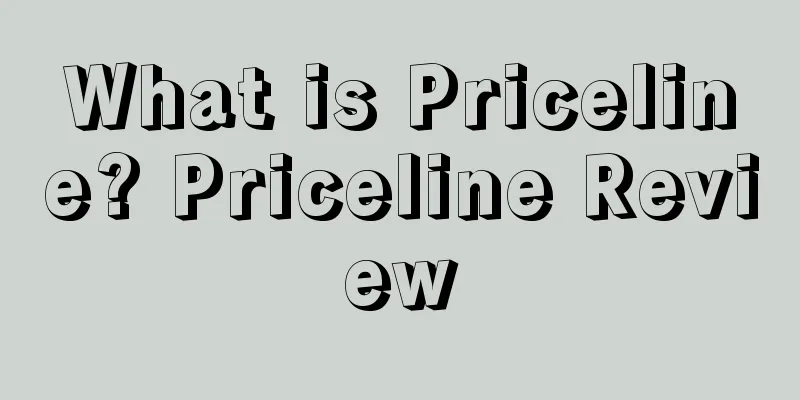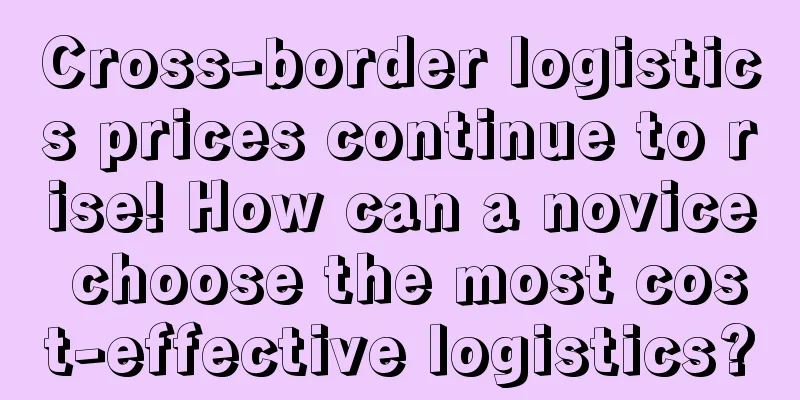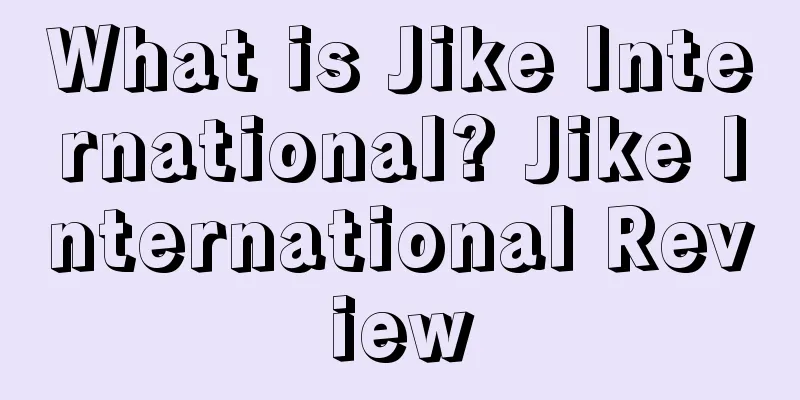What is Priceline? Priceline Review

|
Priceline is a travel service website based on the C2B business model founded by American Jay Walker in 1998. It is currently the largest online travel company in the United States. Based on the C2B business model Foreign name Priceline Founder Jay Walker Founded in 1998 1. Company Profile Opening the Priceline website, the most intuitive options are "air tickets", "hotels", "car rentals" and "travel insurance". Priceline is a typical network economy, which provides an information platform for buyers and sellers to trade and extracts a certain commission. For guests who want to stay in a certain accommodation condition or a specific brand, Priceline also provides traditional hotel booking services. Consumers can choose the hotel they want based on pictures, descriptions, maps and customer reviews, and pay according to the published price. However, the "Name Your Own Price" (customer self-pricing system) created by Priceline has been unique for more than a decade and is considered a revolution in marketing models in the Internet era. Priceline has grown rapidly in the process of inventing and applying this model. II. Historical Evolution In 1998, American Jay Walker founded Priceline and patented its core business model, "Name Your Price". With its unique business model, Priceline quickly received $100 million in financing, and among Priceline's early investors was even a heavyweight like Microsoft co-founder Paul Allen. In the first quarter of 1999, Priceline sold 195,000 air tickets, with a peak of 6,000 tickets sold a day, and 18 airlines joined Priceline's off-season ticket sales plan. In the highly competitive North American aviation market, Priceline was welcomed by airlines that wanted to increase occupancy rates and expand sales channels. In March 1999, Priceline was immediately listed on NASDAQ and was immediately welcomed by investors. In just a few weeks, the company's stock price rose from $80 at the time of listing to more than $160. However, Priceline's glory was short-lived. In 2000, the Internet bubble burst and this rising star, which had not yet achieved profitability, quickly fell. Its stock price once dropped to less than $2. Walker, who was still in the limelight, left the company's board of directors on December 31, 2000. In February 2001, Li Ka-shing's Cheung Kong Holdings and Hutchison Whampoa spent US$73.52 million to acquire a 17.54% stake in Priceline (later gradually increased to more than 30%), becoming Priceline's largest shareholder. After Li Ka-shing took over, he immediately began to implement reform measures to reduce operating costs. Priceline laid off more than 30% of its employees, reduced office space by 70%, suspended the expansion of new businesses, and focused the company's energy on air ticket and hotel reservation services. In addition, the company also optimized its service quality, reducing the time to respond to customer orders from the original 1 hour to 15 minutes, and 80% of emails must be replied within 3 hours. In the end, these measures helped Priceline survive the cold winter of the Internet bubble and the market depression caused by the 9/11 incident shortly afterwards. After 2003, the overall market environment gradually improved, and Priceline finally welcomed new development opportunities. Priceline's rapid growth since then, in addition to its unique "Name Your Price" model, is also attributed to its shrewd expansion strategy. In September 2004, Priceline spent $161 million to acquire Active Hotels, a British online hotel reservation service company, and officially entered the European market. The reason why Priceline chose to focus on expansion in Europe is that it saw the huge potential of the European market. On the one hand, Europeans have always had a tradition of traveling, but at that time, not many people used the Internet to book hotels, which meant that there were a huge number of potential users here. In July 2005, Priceline continued its expansion in Europe by acquiring the Dutch hotel booking website Bookings BV for $133 million. After that, Priceline further integrated Active Hotels and Bookings BV into Booking. Booking has grown into the largest online travel website in Europe. After gaining a foothold in the European market, Priceline set its sights on the Asian market. In November 2007, Priceline acquired Agoda, an online hotel booking company based in Bangkok and Singapore. Overseas expansion has helped Priceline achieve rapid business growth. In May 2010, in order to strengthen its car rental business, Priceline acquired Travel Jigsaw, a car rental website in Manchester, England. The pace of expansion has not stopped. Overseas orders have exceeded 60% of Priceline's total orders, which is much higher than Expedia's 30%.
3. Customers self-pricing The "Name your own price" system invented by Priceline is an extended interpretation of the principle of the relationship between price and value in economics. That is, the value and use value of a product can be reflected through price, but the closer the product is to its expiration date, the smaller its use value will be. In theory, when the expiration date is reached, the use value of the product will become 0. Specifically in the air ticket or hotel industry, the closer to boarding or check-in, the smaller the actual value of the air ticket and hotel room, and once the plane takes off or the room is vacant for more than 24:00 at night, its use value will be 0. Priceline's marketing director for mainland China said: "For airlines, when the 'shelf life' is approaching, the marginal cost of selling one more ticket and taking one more passenger is the cabin food, while the marginal benefit can be maximized; for hotel operators, the marginal cost of selling the last room is just the toiletries and water and electricity costs. Therefore, for suppliers, the last empty seat before the plane takes off and the last vacant room in the hotel are of course profitable." Based on the above economic principles and realities, Priceline has proposed an original business model: "Name your own price" system. This model allows consumers to quote the price they are willing to pay for a certain product or service to the Priceline website through the Internet, and Priceline is responsible for finding suppliers willing to sell the product at the price set by the consumer from its own database or supplier network. However, this pricing model is not suitable for all groups of people. It only works for price-sensitive customers. It is not attractive enough to business people or high-end customers who require high time efficiency because they are not short of money. Therefore, Priceline mainly designs its products and services for price-sensitive customers and consumers who want to travel at a low price. It is this price-sensitive group that constitutes Priceline's main customer base. There are large-scale travel service websites such as Ctrip.com or eLong.com in China, and Expedia abroad. They focus on "peak season" sales. As a latecomer, Priceline did not seize the market share of the traditional B2C model, but cleverly avoided its edge and deeply explored "off-season" customer resources. In the "off-season", there are more travel resources for fewer consumers to choose from, so there are a large number of travel products approaching their "shelf life". Priceline allows consumers to only provide their desired products and prices online, and Priceline will do the rest. This not only reduces the purchase price for consumers, but also saves transaction costs, thus winning the favor of "off-season" customers. The emergence of a successful business model is bound to attract a large number of imitators, but Priceline was prepared. When the company was founded in 1998, its founder Jay Walker applied for a patent for the "Name your own price" system. Therefore, competitors could not use this business method for 20 years, which objectively raised the threshold for the business model to be copied and the entry barrier. On this basis, Priceline began to vigorously develop a pure online booking model to promote the continued growth of its business. The head of Priceline's market in mainland China said: "In the past, Priceline realized that the business from call centers in the markets it serves is insignificant, and a large part of the so-called online transactions are actually completed through call centers. But some well-known online websites, including eLong, show that the situation has changed. More and more reservations through Priceline are pure online transactions, rather than telephone transactions. We will continue to provide telephone reservation services, and we believe that customers can get good service in this way. Of course, from a profit perspective, we hope that more people use online reservations. But we know that in some areas, the acceptance of online transactions is still relatively low." He added: "The pure online model has greater advantages than call centers, after all, call center wage costs are relatively high, especially in Europe and the United States. But Ctrip's success proves that as long as wage costs are relatively low, a travel company based on call centers can also be successful. The debate between labor costs and technology costs is an old issue. Once technology costs continue to fall and labor costs continue to rise, only technology-oriented companies will eventually gain more benefits." 4. Transaction Costs China's labor market and labor laws are not yet sound enough, especially the "paid vacation" system needs to be improved, which restricts the market size during the "off-season". However, this is also the opportunity for Priceline to finally integrate into the Chinese market. The small market size in the "off-season" indicates that the market has huge room for growth, and once people get used to "paid vacation" (which is also an inevitable trend), the market prospects of tourism-related industries will be immeasurable. In particular, most people in my country's tourism market are price-sensitive. With the blowout speed of the future tourism market, I believe that Priceline still has a lot of room for development in my country. In addition, most of China's hotel resources are not concentrated in chain hotel management groups, but are scattered among independent hotel operators. Such a resource distribution pattern requires intermediaries like Priceline to integrate and provide intermediary services. According to public market data, Priceline's operating income in 2009 was US$2.3 billion and its net profit was US$489 million, which increased by 2.1 times and 6.7 times respectively compared with 2006 before the financial crisis. In contrast, China's industry leader Ctrip.com's operating income and net profit in 2009 were RMB 565 million and RMB 190 million respectively. By comparison, we can see that Priceline and the "C2B" business model it represents still have huge room for development in China. Throughout the Priceline core value chain, Priceline has always played the role of a network middleman. It has established an indirect distribution channel model and built an effective communication bridge between producers (service providers) and consumers. After experiencing the Internet bubble and the "911" incident, Priceline still occupies an important position in the industry, and its core competitiveness is the value it provides to users. From the user's perspective, Priceline shortens the time it takes for consumers to find products. Consumers only need to provide Priceline with relevant demand information: expected products and expected prices, and Priceline will do the rest, which saves consumers' expenses. Because the products provided on Priceline cut out the middleman of the transaction, it saves transaction costs, and this part of the transaction cost savings has room to provide discounted products to customers. This is also the key reason why Priceline can attract customers. From the perspective of service providers, Priceline saves transaction costs for product providers (various airlines, hotels, etc.). Priceline provides direct demand information to manufacturers (various airlines, hotels, etc.), reducing the transaction costs required for manufacturers to reach transactions with consumers. This part of the reduced transaction costs makes lower discounts possible. This can also increase the income of product and service providers. Because Priceline provides consumers with demand information in a timely manner, product and service providers can provide products more targeted, and at the same time, products that lack consumption time flexibility (such as: expired air tickets cannot be used again, and hotel rooms that are empty for a day are a waste) are more efficient and increase corporate revenue. 5. Business Model Innovative booking Priceline provides a service that is completely different from the traditional reservation business. Even in the entire consumer market, such a business model is rare. Priceline calls this model "self-service pricing", and the academic community calls it "reverse auction" or "buyer pricing". Simply put, on the buyer's pricing trading platform, consumers offer the price of the product they want to buy and the general attributes of the product, and then wait for the product provider to decide whether to accept this price and serve the consumer. For example, consumers who book a hotel on the Priceline website need to submit the hotel star rating, the general area of the city, the date and the price to the system. In less than a minute, the Priceline website will return a page to inform whether the price is accepted, and feedback the specific information of the product, including the hotel name and address, to the consumer. At this time, the consumer must accept the transaction, regardless of whether the hotel is satisfied or not. This is why this model is called "reverse auction" - the purchase behavior cannot be regretted. Compared with Expedia, Priceline's biggest advantage is price. Usually, a 4-star hotel priced at $100 on Expedia can be auctioned for around $50 on Priceline. This price gap is almost fatal to the sales of hotel products. Reverse auctions have high added value The reverse auction model has three very important advantages. First, because the time factor can reduce the use value of travel products to zero, and its variable cost is low, the profit margin that the seller can give away is very large. For an auction platform, this also means that the value space it can provide is attractive enough. The final transaction price of many hotel rooms on Priceline can reach half of the direct booking price or even lower. In this way, consumers who like to take advantage will come one after another, forming a word-of-mouth effect. There is a rule in the business world that how much money you can save for consumers is how much money you can earn for yourself in the same proportion. In terms of profitability, Priceline's reverse auction model is incomparable to the traditional commission model. Secondly, the reverse auction model protects business brands very well. The rooms with the largest price cuts on Priceline are usually provided by 5-star hotels, because the gap between their pricing and variable costs is the largest. In fact, 4-star and 5-star hotel rooms have always been the best-selling products on Priceline, because ordinary people can buy luxury that they cannot enjoy at ordinary times at low prices. For a long time, luxury hotels have also been happy to sell some vacant rooms at low prices, but the main obstacle comes from the negative impact of publicly low prices on their own brands. Priceline provides good protection for the brand in this regard. On the website, the public cannot see any quotation information. Only the consumer who successfully auctions the room product can see the hotel name and price information. Even in theory, no sales model can better protect the brand image. Third, Priceline provides unprecedented entertainment and fun for e-commerce. In the past few years, eBay's TV commercials always ended with this sentence: "Shopping victoriously." Indeed, auction platforms represented by eBay not only facilitate consumers' shopping, but also provide a sense of joy of successful shopping, and Priceline pushes this "sense of achievement" to the extreme. 6. China Business Unfortunately, Priceline has not made much progress in the Chinese market. The main reason is that high-quality travel resources in China are relatively scarce, and the owners of these resources have a higher bargaining power than consumers. At the same time, since Chinese people tend to travel on statutory holidays and paid vacations are not yet popular, the consumer demand for the Priceline model is insufficient. In addition, the low level of management sophistication of travel product providers and the government's price control on related travel products such as air tickets have created obstacles for the development of the Priceline model in the domestic market. But at the same time, we should also see that most domestic consumers are extremely sensitive to prices. In the long run, the Priceline model will surely succeed in the Chinese market, and all it needs is for the timing to be right. Of course, just like other areas of the Internet, the final winner may not be Priceline, but a local company that imitates its model. 7. Acquisition Trends 2012 On November 9, 2012, the company signed an acquisition agreement with travel search engine Kayak Software to acquire Kayak for US$1.8 billion. Driven by the news, Kayak's stock price surged 26.22% in after-hours trading on the Nasdaq market that day, while Priceline's stock price fell 2.15%. Priceline announced that it would acquire Kayak at $40 per share, with a total transaction price of approximately $1.8 billion. Priceline will pay $500 million in cash and another $1.3 billion in stock options. After the acquisition is completed, Kayak will operate independently as a subsidiary of Priceline. Based on Kayak's closing price of $31.04 on Thursday, the transaction premium is 29%. Priceline CEO Jeffery Boyd said, "Kayak has a strong brand in the online travel search market and a strong track record of growth." Kayak CEO Steve Hafner said joining Priceline would help Kayak accelerate its growth. Priceline announced the acquisition after Kayak released its third-quarter earnings report. Kayak's earnings report showed that in the third quarter ending September 30, the company had a net profit of $7.18 million, or $0.19 per share. This performance was better than the same period last year. In the third quarter of 2011, Kayak's net profit was $4.03 million, or $0.18 per share. Kayak's revenue in the third quarter was $78.6 million, higher than $61.16 million in the same period last year. Kayak's adjusted earnings per share in the third quarter were $0.26. Kayak's third-quarter performance exceeded market expectations. According to FactSet statistics, market analysts had previously expected that Kayak's third-quarter earnings per share would be $0.18 and revenue would be $77.36 million, not in accordance with US generally accepted accounting principles. Kayak just launched its IPO at $26 per share. Herman Leung, an analyst at Susquehanna, believes that this deal will have a profound impact on the online travel market. The analyst said in an investor report on Thursday, "We initially believe that this deal will affect the entire online travel system because the largest online travel agency will enter the marketing terminal channel." Priceline's stock price fell by $6.74, or 1.06%, to $627.87 in regular trading on the Nasdaq Stock Market on Thursday. In subsequent after-hours trading, Priceline's stock price fell by $13.51, or 2.15%, to $614.00. In the past 52 weeks, Priceline's lowest stock price was $438.76 and its highest stock price was $774.96. Based on Thursday's closing price, Priceline's market value is approximately $31.31 billion. 2014 In June 2014, online travel giant Priceline has reached an acquisition agreement with online hotel reservation service provider OpenTable, and will acquire the latter for $2.6 billion. OpenTable is one of Apple's partners, and it supports Apple Siri's reservation function. Priceline will acquire OpenTable for $103 per share, which is $29 higher than OpenTable's closing price on June 12. The transaction will be paid entirely in cash. Executives of the two companies said that Priceline can help OpenTable expand into the international market. Priceline CEO Darren Huston said: "We look forward to helping the OpenTable team accelerate their global expansion, provide more value to their hotel partners, and provide a richer end-to-end experience for our desktop and mobile device users." |
<<: What is Solid Commerce? Solid Commerce Review
>>: What is Sellbrite? Sellbrite Review
Recommend
What is Lilanda? Lilanda Review
Shenzhen Lilangda Technology Co., Ltd. (hereinafte...
Tokopedia obtains P2P lending operating license
Indonesia's Financial Services Authority (OJK)...
Amazon operations are busy every day???
text This question has always bothered me. I don’...
Demonstrations broke out in the United States! Italy will reopen on May 4th!
0 1 Protests break out across the U.S. According ...
The impact of the Shanghai epidemic outbreak on the United States: West Coast port congestion worsens!
<span data-shimo-docs="[[20,"获悉,近日全球采购和供应链...
Twitter Blue is back for $8 on Android, $11 on iOS
Twitter Blue is being relaunched to the public: An...
What is engine power? Engine power evaluation
Engine Power is committed to Google SEO overseas o...
Starting from scratch, Shopify's 30-day store opening tutorial - Day 4
Last time we talked about what conditions a store...
The Russian market continues to heat up, is this an opportunity for Chinese sellers?
Russia's e-commerce market has been at a forma...
What is Amazon Pricing Status? Amazon Pricing Status Review
Amazon recently announced that in order to make it...
How to improve the quality of copy, pictures and videos on Amazon product pages
In e-commerce sales, physical products are displa...
Online prices fell 0.2% year-on-year! US inflation slowed slightly in September!
<span data-docs-delta="[[20,"获悉,近日Adobe公布了...
Amazon is testing a new advertising method! These big brands have already started using it
Cross-border Business School Information and skil...
What is Barclays Bank? Barclays Bank Review
Barclays Bank is one of the largest commercial ban...
Sellers are blackmailed for shipping?! Where is the bottom line of the platform?
Preface of the Little Clone: Recently, everyone s...









